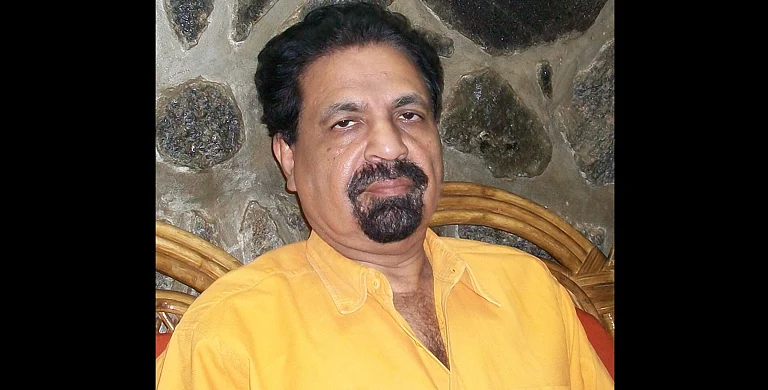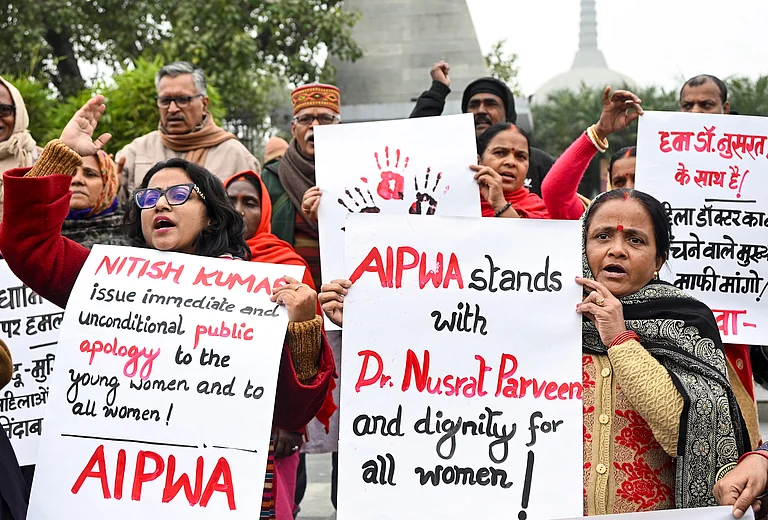The scam was known to everyone involved in Punjab’s rice trade. Only the consumers were in the dark. It took a catastrophe like the tsunami to expose the well-entrenched collusion between the officials of the Food Corporation of India (FCI), private millers and local politicians. What it revealed was a shocking story of how FCI supplied rice, often unfit for consumption, in huge quantities to lakhs of tsunami-affected people in rice-eating states like Tamil Nadu.
As the investigation progressed, it became clear that substandard rice was going from the FCI’s state godowns to several other states like Assam, Orissa and MP. Punjab, the paddy heartland that accounted for 70-75 per cent of rice procured by the central government last year, had become the hub of a thriving business. It was one that enabled hundreds of powerful men to clean out FCI’s good stock, substitute it with bad ones, and polish off with the loot.
For years, corrupt officials and dishonest businessmen had made money from the trade. But it took minutes of the tsunami to expose the nexus. Post-disaster, as lakhs of people on the east coast lost everything, there was a surge of demand for rice from the southern states. Punjab became one of the foremost suppliers. After all, rice worth Rs 10,000 crore is procured in Punjab each season and last year, the state contributed 88 lakh tonnes to the central pool. So, the Centre decided that the entire stock of rice procured by FCI, other state agencies and the Punjab millers (who were allowed to sell 25 per cent of their stocks in the open market) will be distributed through the levy (or government-controlled) route.
Howls of protest from the recipient states followed. Jayalalitha, Tamil Nadu CM, complained vociferously about the quality of Punjab’s rice and refused to distribute the three lakh tonnes lying in her state’s railway godowns. By May-June ’05, the protests were heard from other states. "Punjab generally supplies bad quality rice, but the stocks received in ’05 were the worst we’ve ever got," confides a senior FCI officer. And the authorities were forced to look into the issue.
So, what’s the scam about? It really is quite simple. FCI, which comes under the central foods ministry, and other state agencies procure paddy during the kharif season. The central pool is used to supply the grain through ration shops at cheap prices, use the stocks during disasters, and help farmers by offering them a minimum rate. In Punjab, the entire procurement is sent to private millers for cleaning, shelling and polishing. The millers return the finished product back to the FCI.
The rip-off happens in the millers’ godowns. The mills mix quantities of low-priced grain in the FCI stocks and sell the better rice in the open market at higher prices. One of the ways to do it is by buying rice from UP at Rs 3-4 per kg, compared to Rs 11-12 for better quality product. Agrees T.C. Gupta, FCI’s senior regional manager who has replaced Prasad, "Even in last December, while the quality control drive was in full swing, we detected two rakes that had arrived from Hardoi and Roza in UP and were being unloaded at Sunam and Chandigarh. We took preventive measures, but we suspect that hundreds of such rakes come to Punjab every year."
A few millers have also been suspected of mixing export-reject rice from the Kandla port. A miller told Outlook that sometimes ‘nakku’, an extremely hazardous product that’s actually the broken pointed ends of paddy, is also mixed. Even the rice that’s damaged due to excess moisture and loses uniformity of colour is used. The millers merely use a ‘colour sortex’, which sorts the rice according to colour—yellow in one section and brown in another. "Rice of uniform colour, even if it’s substandard, looks better and is more likely to escape detection," reveals another miller.
The entire operation works because of the nexus between millers, FCI officials and local politicians. Obviously, everyone gets a slice of the pie. Surjit Singh, a retired FCI assistant manager in Faridkot, agrees, "The paddy procured by FCI is of good quality. But the millers replace it with poor quality stuff. This is done in connivance with the FCI quality control staff. The good rice is then sold by the millers at good prices in the open market while the FCI godowns are filled with substandard product."
Thanks to the burgeoning profits, of the 3,000-odd rice mills in Punjab, nearly 700 have been set up in the past 3-4 years. Sources also indicate that many of the newer mills are owned by low-level FCI officials. Others have been set up by commodities commission agents and local politicians. In fact, towns in the paddy belt like Faridkot and Sangrur are full of amazing rags-to-riches stories involving FCI officials. The towering tsunami waves, however, ripped the veil off this corrupt system.
Last September, the Chandigarh branch of the CBI conducted raids in districts like Faridkot, Sangrur, Bhatinda, Ferozepur and Ludhiana. The agency collected 451 rice samples from FCI godowns and sent them to the Central Grain Analysis Laboratory in the state capital. The results were scandalous: Only 13 samples, or less than 3 per cent of the total, met the standards set by the Prevention of Food Adulteration (PFA) Act.
As soon as the FCI officials got wind of the investigations, they immediately tried to get rid of the stocks in their godowns. They dispatched dozens of railway rakes to the tsunami-affected and other states. The CBI traced the rakes dumped at railway stations in Chennai, Hyderabad and Guwahati and collected 88 samples from them for further analysis. Only three of them were within the limits in the PFA Act. But worse, 17 of the samples were deemed unfit for human consumption.
On January 7, ’06, the CBI registered cases against 164 FCI officials, including Shiva Prasad, the corporation’s senior regional manager in Punjab. The FCI’s head office conducted an independent inquiry, chargesheeted 200 officials, blacklisting 166 private rice millers. Among those who were chargesheeted are Prasad, five district managers and four senior managers involved with quality control.Simultaneously, the central foods ministry realised the extent of the rot in the rice procurement system. Outlook accessed documents that show it was quite easy to run the network without the fear of getting caught. When the ministry retraced the trail backwards from the rice stocks that were lying in Salem, Madurai, Trichy, Villupuram and Dharampuri, it found that the FCI officials who were responsible for dispatching stocks that were below the PFA Act-specified limits had been posted in the same area for the past 20-25 years. Worse, the vigilance profile of these officials showed they had been "chargesheeted as many as 40 times for acceptance of brl (Below Rejection Limit) rice," and that they were habitual offenders.
Even the millers are open about the corruption in FCI. Ashok Grover, whose rice mills have been blacklisted by the FCI, says, "We have to pay Rs 5,000-7,000 per consignment (of 500 bags) as grease money to FCI officials. This has been ingrained in the system. I feel that if even 30 per cent of the FCI operations in quality control are done as per the rule book, the adulteration of rice will stop."
After the scandal broke out, FCI asked the millers to replace the substandard rice supplied last year with better quality one. But it has stated that only the stocks that’re still lying in Punjab godowns will be replaced. Only some millers like Grover have reached an understanding to replace 60,000 tonnes worth Rs 70 crore. Most have gone to court with the plea that they can’t be asked to replace rice as FCI quality control officials had already cleared their consignments.
Now that the authorities have caught on, will Punjab’s FCI start supplying good quality rice? A number of experts feel the procurement process may become better, but the problem of substandard rice will not vanish. That’s because there are deep-rooted reasons that propagate the buying of low-quality grain by the FCI. The genesis of the problem lies in the early paddy harvesting practiced by the Punjab farmers. Around August or September, when the monsoons arrive, farmers worry about the possibility of their crop getting damaged due to rains. Harvesting the crop during the monsoons also implies one that’s heavier due to higher moisture content. The result: bad quality paddy.
Trade circles add that the farmers are encouraged by the ruling party, which pressurises state procurement agencies to lift the substandard paddy. Although FCI’s Gupta estimates that bad paddy procured under political pressure is only around 10 per cent, private millers say it’s about 40 per cent. In fact, some of them contend that Punjab CM Amarinder Singh’s move to "smooth the procurement at mandis" to help the farmers has added to the problem.
Last September, the FCI’s Punjab regional office refused to lift paddy that was below the specified limits. Says Gupta, "I announced that I will not accept substandard rice." This led to an agitation by the farmers and the CM flew to New Delhi in a bid to coax the Centre to relax the specifications. He was successful as the prescribed moisture content was doubled to 8 per cent and the content of damaged rice was increased from 2 to 4 per cent.
Obviously, huge quantities of low quality rice found its way into FCI’s godowns. The solution, according to rice millers, is to permanently lower the specifications. The reason: prevalent agriculture practices and politics ensure that FCI procures low-quality paddy. The current situation breeds corruption since, explains Grover, "money changes hands at every stage." Allowing FCI to officially do that by lowering specifications will kill the dishonest nexus. The logic assumes that consumers, who are used to eating bad quality rice, will continue to do so. Only this time, it’ll have the official blessings.


























